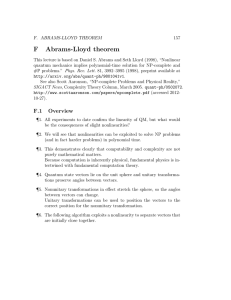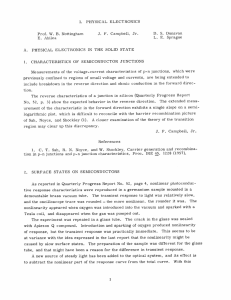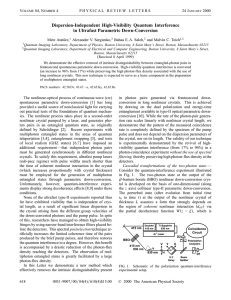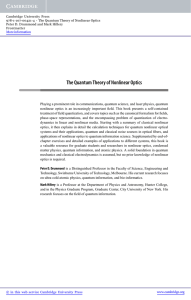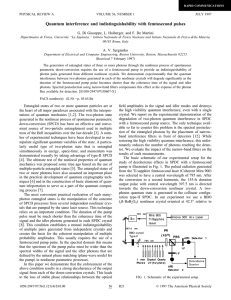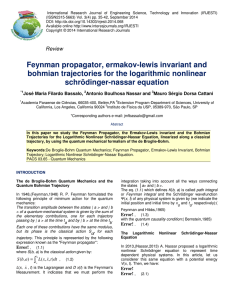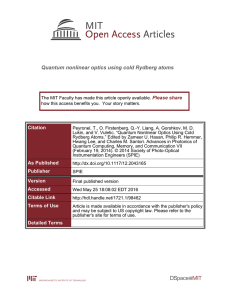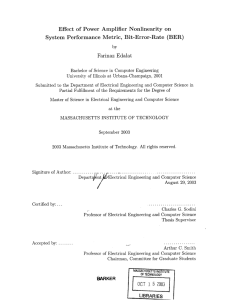NONLINEAR QUANTUM GRAVITY GEORGE SVETLICHNY
advertisement
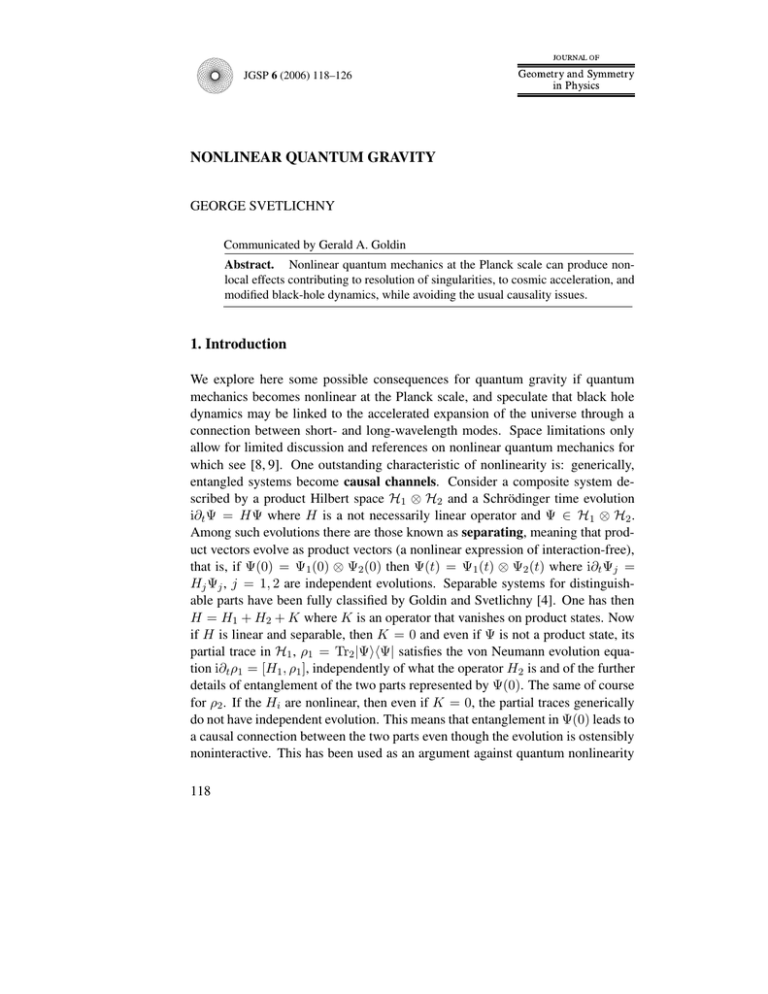
JGSP 6 (2006) 118–126 NONLINEAR QUANTUM GRAVITY GEORGE SVETLICHNY Communicated by Gerald A. Goldin Abstract. Nonlinear quantum mechanics at the Planck scale can produce nonlocal effects contributing to resolution of singularities, to cosmic acceleration, and modified black-hole dynamics, while avoiding the usual causality issues. 1. Introduction We explore here some possible consequences for quantum gravity if quantum mechanics becomes nonlinear at the Planck scale, and speculate that black hole dynamics may be linked to the accelerated expansion of the universe through a connection between short- and long-wavelength modes. Space limitations only allow for limited discussion and references on nonlinear quantum mechanics for which see [8, 9]. One outstanding characteristic of nonlinearity is: generically, entangled systems become causal channels. Consider a composite system described by a product Hilbert space H1 ⊗ H2 and a Schrödinger time evolution i∂t Ψ = HΨ where H is a not necessarily linear operator and Ψ ∈ H 1 ⊗ H2 . Among such evolutions there are those known as separating, meaning that product vectors evolve as product vectors (a nonlinear expression of interaction-free), that is, if Ψ(0) = Ψ1 (0) ⊗ Ψ2 (0) then Ψ(t) = Ψ1 (t) ⊗ Ψ2 (t) where i∂t Ψj = Hj Ψj , j = 1, 2 are independent evolutions. Separable systems for distinguishable parts have been fully classified by Goldin and Svetlichny [4]. One has then H = H1 + H2 + K where K is an operator that vanishes on product states. Now if H is linear and separable, then K = 0 and even if Ψ is not a product state, its partial trace in H1 , ρ1 = Tr2 |ΨihΨ| satisfies the von Neumann evolution equation i∂t ρ1 = [H1 , ρ1 ], independently of what the operator H2 is and of the further details of entanglement of the two parts represented by Ψ(0). The same of course for ρ2 . If the Hi are nonlinear, then even if K = 0, the partial traces generically do not have independent evolution. This means that entanglement in Ψ(0) leads to a causal connection between the two parts even though the evolution is ostensibly noninteractive. This has been used as an argument against quantum nonlinearity 118









